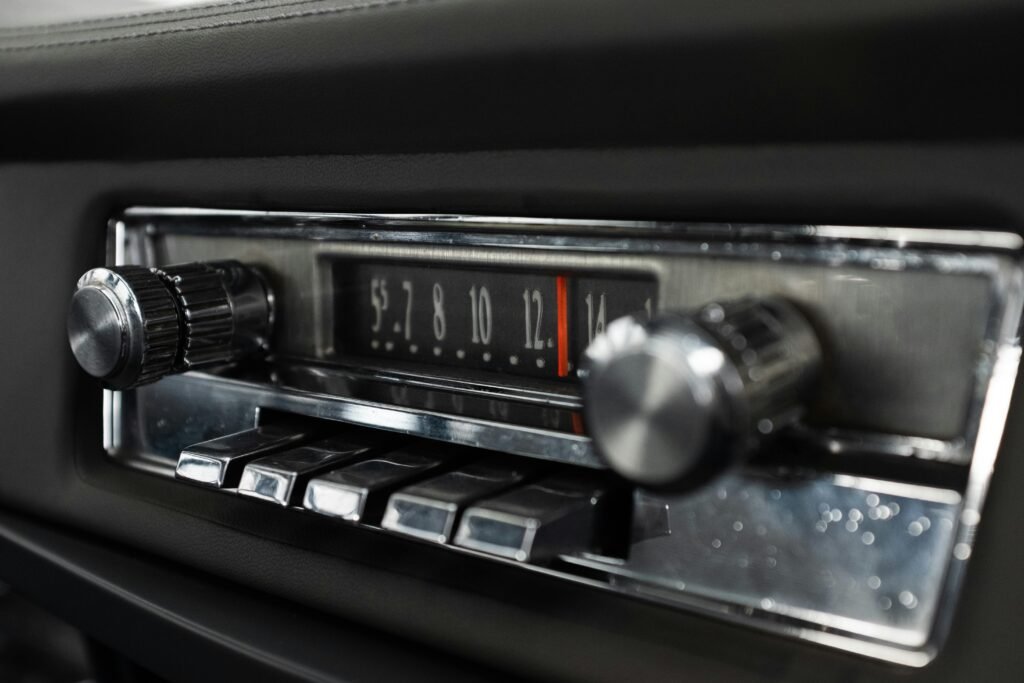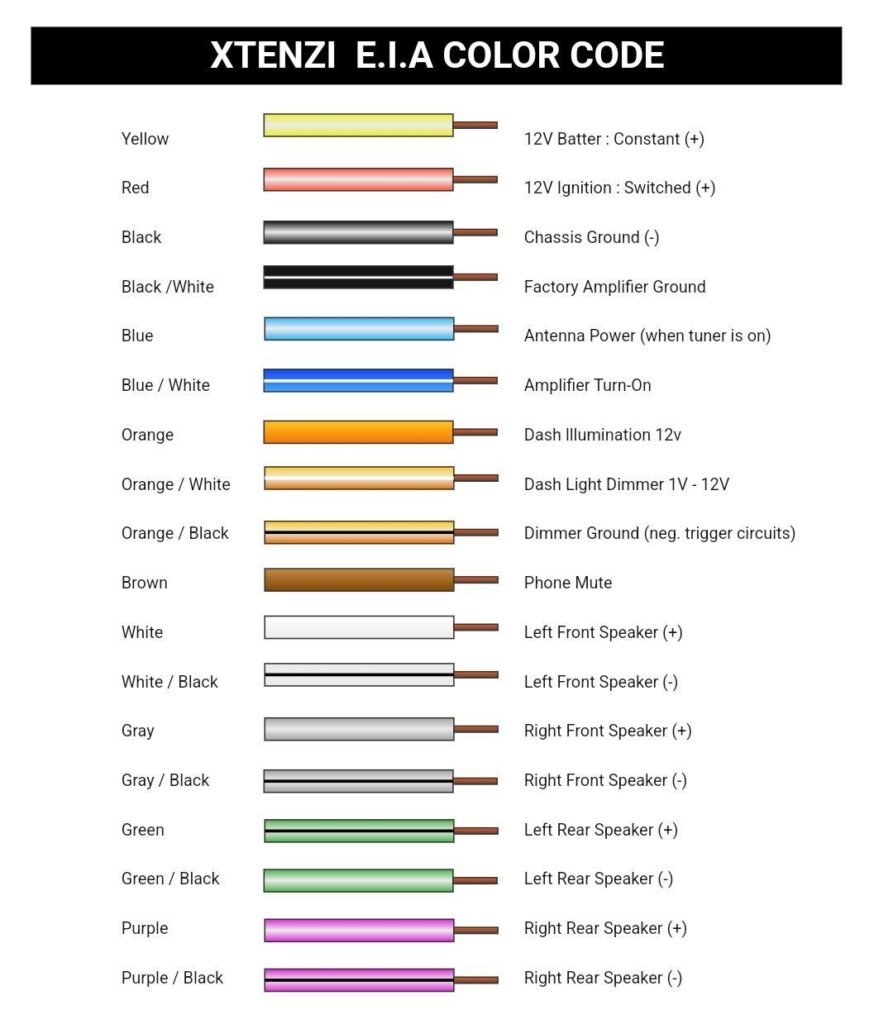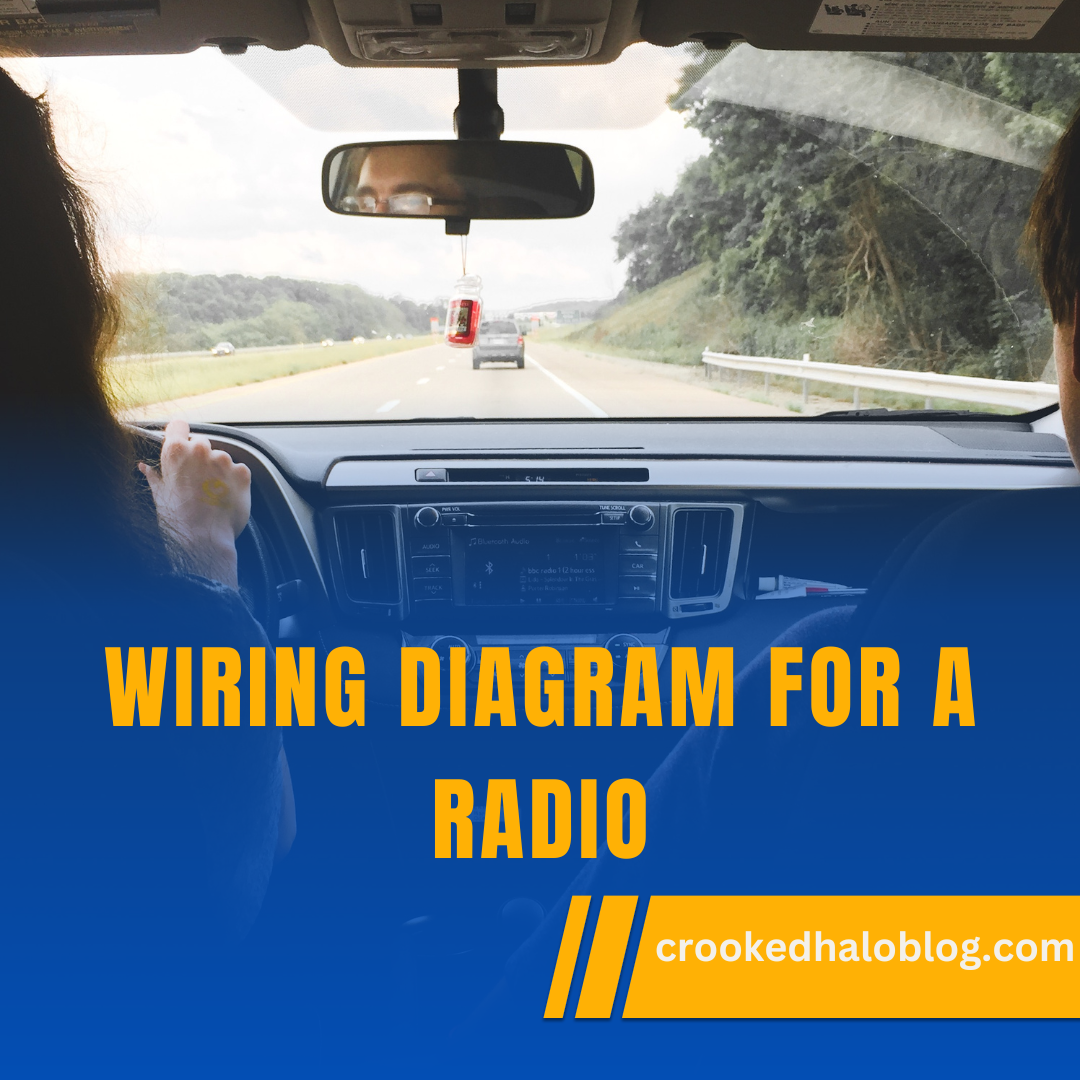Although wiring a car radio might sound like a straightforward task if you have done it before or if you tend to fix things in your car by yourself. Nonetheless, with a little help and the correct equipment, one can add a fresh radio or address existing equipment difficulties without much problem. This guide will help to make the process of interpreting wiring diagrams for car radios as clear as possible and explain the general process step by step.
What is a Wiring Diagram for a Radio?
A wiring diagram of the radio is as if the car’s electrical system that you can identify even areas you have not personally visited but have been informed about. It employs symbols and colored lines to inform you of the way you have to link the aspects. When it comes to car radios, the wiring diagram for a radio will indicate how the radio should be connected to the source of power, car speakers, or any other audio equipment.
Key Components in a Wiring Diagram for a Radio

1. Power Connections
- Constant Power (12V+): This wire is typically yellow and its function is to supply constant voltage to the operational radio to maintain setting. In some way, it’s like the source and supply of the radio.
- Switched Power (Ignition): Usually red in color, this wire provides supply current when car is switched on, it ensures that device such as radio shuts off and on with the vehicle’s ignition
- Ground:Solid wire of black color that usually forms the final electrical connection. It is also equivalent to the anchor of the radio.
- Antenna Power:Brown wire previously applied to power the antenna or amplifier to have a clear reception of the radio.
2. Speaker Wires
- Front Left (+/-):A white color with some white and a black line in the middle for species.
- Front Right (+/-):Generally gray/brown/ash and black streak.
- Rear Left (+/-):Often green and green with a black line.
- Rear Right (+/-):Usually it is purple, and there is also a version of the material that is purple with a black stripe.
3. Additional Connections
- Dimmer:The third one is orange with a white stripe located at the bottom of the display acts as the brightness control button.
- Amp Turn-On:Blue with a white stripe, it is used to turn on an external amplifier each time the radio is on.
- Illumination:Orange wire that creates a low visibility of the radio display when you switch on the car lights making it comfortable to your eyes at night.
How to Read the Wiring Diagram for a Radio

1. Identify Symbols and Colors:

Learn and recognize a wiring diagram of the radio and what each symbol and color of the cables means. Every color of the wire has its particular meaning as to which connections are present. Your friend would be the radio’s manual and the wiring diagram of your car as well as in this case.
2. Follow the Paths:
Identify each lead from the radio to its termination point. Ensure that the wires connected to the power are well done to help you avoid any accidents that may occur. This step should be evident when drawing a wiring diagram of a radio for example.
Check Connections:
Every connection should be checked to ensure that there is no shortage of components or damage. It should be stressed that all the wires must be connected properly and encased in their respective insulating material. It means you want to follow the wiring diagram of that radio to avoid making the wrong connections.
Step-by-Step Installation Guide Using a Wiring Diagram Of a Radio
1. Gather Tools and Materials:
You’ll need wire strippers, a crimping tool, electrical tape, and connectors, along with your new radio and its wiring harness.
2. Prepare the Car:
Remove the negative terminal to forestall any connection-related electrical short-circuits. Subsequently, unplug the current radio about your car’s unique disassembly process. The wiring diagram of a radio is of so much help when identifying the proper wires to string on.
3. Connect the Wires:
Connect the wires from the radio harness to the wires of the car harness with the help of using the wiring diagram for a radio. Screw the connection with crimp connectors or solder in place properly. Ensure and make each joint of the connection insulated using electrical tape.
4. Install the Radio:
Place the new radio where it will fit into the car dashboard. Connect the terminal of the battery to the radio and switch it ON to confirm that all the features of the radio work as they should. The layout of various connections in a radio shall be determined from the wiring diagram to assist in the confirmation of the connections.
5. Secure and Finalize:
After you are equally certain that all the settings on the radio are working correctly, then fix the radio and close up the dashboard. Ensure that every trim piece has been appropriately screwed back in and that one should use the wiring diagram of the radio as a guide.
Troubleshooting Common Issues with a Wiring Diagram for a Radio
1. No Power:
Check the connections of the power and the ground terminals and the fuse of the radio circuit. The layout of the wiring in a radio will enable you to locate these connections from the wiring diagram.
2. No Sound:
Make sure that the connections of the speaker wires are perfect and try the speakers separately to evaluate what is wrong. Since wiring diagrams are correct in terms of paths, if you need to know the proper wiring patterns of a radio, you should obtain a wiring diagram for a radio.
3. Interference or Poor Reception:
Look at the antenna and confirm that the antenna power wire is connected, if one exists in your car. The circuit diagram of a radio shall show the correct hook-up to obtain the best signal.
Conclusion
With some knowledge of wiring diagrams for a radio, it becomes easy to install or even troubleshoot a radio. Thus, having read through this guide and keeping an eye on some aspects, you can succeed in the installation of your car radio. Whether you are adding a new sound system to your car or changing a faulty radio, this article is meant to assist you in wiring the unit without any struggle.
